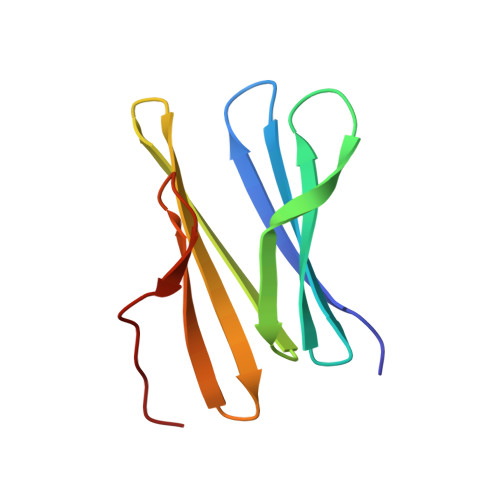Supramolecular Synthons in Protein-Ligand Frameworks.
Flood, R.J., Mockler, N.M., Thureau, A., Malinska, M., Crowley, P.B.(2024) Cryst Growth Des 24: 2149-2156
- PubMed: 38463617
- DOI: https://doi.org/10.1021/acs.cgd.3c01480
- Primary Citation of Related Structures:
8Q6A, 8Q6B, 8Q6C - PubMed Abstract:
Supramolecular synthons, defined as reproducible intermolecular structural units, have greatly aided small molecule crystal engineering. In this paper, we propose that supramolecular synthons guide ligand-mediated protein crystallization. The protein RSL and the macrocycle sulfonato-calix[8]arene cocrystallize in at least four ways. One of these cocrystals is a highly porous cube comprising protein nodes connected by calixarene dimers. We show that mutating an aspartic acid to an asparagine results in two new cubic assemblies that depend also on the crystallization method. One of the new cubic arrangements is mediated by calixarene trimers and has a ∼30% increased cell volume relative to the original crystal with calixarene dimers. Crystals of the sulfonato-calix[8]arene sodium salt were obtained from buffered conditions similar to those used to grow the protein-calix[8]arene cocrystals. X-ray analysis reveals a coordination polymer of the anionic calix[8]arene and sodium cation in which the macrocycle is arranged as staggered stacks of the pleated loop conformation. Remarkably, the calixarene packing arrangement is the same in the simple salt as in the protein cocrystal. With the pleated loop conformation, the calixarene presents an extended surface for binding other calixarenes (oligomerization) as well as binding to a protein patch (biomolecular complexation). Small-angle X-ray scattering data suggest pH-dependent calixarene assembly in solution. Therefore, the calix[8]arene-calix[8]arene structural unit may be regarded as a supramolecular synthon that directs at least two types of protein assembly, suggesting applications in protein crystal engineering.
Organizational Affiliation:
SSPC, Science Foundation Ireland Research Centre for Pharmaceuticals, School of Biological and Chemical Sciences, University of Galway, University Road, Galway H91 TK33, Ireland.

















